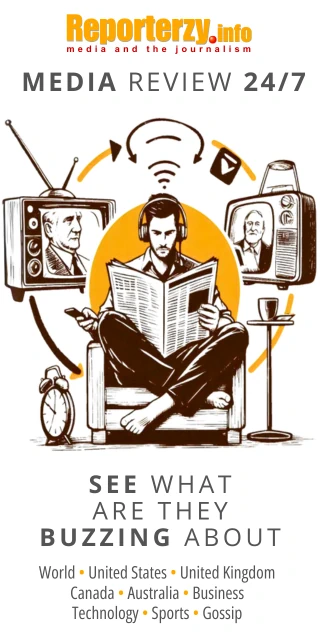 illustration: Bing AI
illustration: Bing AIThe Future of Professions: New Realities of the Job Market
In the coming years, public media will undergo dynamic changes in professions and required skills. Digital transformation accelerates the introduction of new roles that seemed unrealistic a decade ago. The report states that about 65% of children starting school today will work in jobs that do not yet exist.
- 9 million new jobs annually will be created worldwide by the green transition, with 12% in the creative sector.
- The labor market has identified 51 key skills, including 25 technological ones, such as Python programming, cloud content management, and augmented reality design.
An example is the role of data analysts, who are essential for creating personalized media content. These analyses also help target advertisements better and reduce promotional campaign costs, already implemented by many public broadcasters.zzz
Future Skills: Technology and Creativity
Digital transformation not only changes jobs but also redefines which skills will be most in demand. The report highlights the need to develop both technical and soft skills. Media professionals must combine creativity with data analysis and modern technology management.
Priority Skills:
- Data Analysis and AI: Leveraging artificial intelligence in newsrooms and analyzing audience data for content personalization.
- Creativity in the Digital World: Designing interactive experiences in VR/AR and storytelling tailored to new platforms.
- Flexibility and Adaptability: Quickly learning new tools and working in agile project teams.
An example of applying these skills is the work of virtual set designers who use XR (Extended Reality) technology to create dynamic visual spaces for TV studios.
New Professions: The Impact of Technology on the Job Market
The report shows that media transformation brings new professional roles. Content algorithm specialists and analysts monitoring AI ethics will become part of everyday newsroom operations. Already, demand for these professions in Europe is growing by about 25% annually.
New Professions in Public Media
| Profession | Required Skills | Example Activities |
|---|---|---|
| AI Specialist | Programming, data analysis | Newsroom automation |
| VR/AR Designer | Technology expertise, storytelling | Interactive entertainment programs |
| Digital Content Strategist | Content management, audience analysis | Promotional campaign optimization |
| ESG Expert | Sustainability knowledge | Green production studios |
The future of public media promises an explosion of specializations that seemed like science fiction until recently. The "Future Jobs at Public Service Media" report points to a growing demand for immersive experience designers, who will create engaging content in virtual and augmented reality. This means building spaces where viewers not only watch programs but also interact with them – from virtual museums to interactive talk shows.
The Impact of Technology on Creative Jobs (2023–2030)
| Application Area | Current Workforce | Projected Growth (%) by 2030 |
|---|---|---|
| VR/AR Content | 4,500 | 85% |
| Cloud Video Editing | 12,000 | 40% |
| Content Personalization | 6,700 | 50% |
| Metrics Analysis | 8,900 | 70% |
Green Transition and Future Leaders
One of the most interesting aspects of the report is the role of public media in the green transition. Producing content promoting sustainability and implementing eco-friendly practices in production studios is becoming a priority. For example, Norwegian public broadcaster NRK reduced CO2 emissions from its productions by 30% in three years.
Green Transition Initiatives:
- Using renewable energy in TV studios.
- Implementing carbon footprint calculation systems in production processes.
- Promoting educational content on environmental protection in children’s and youth programs.
The report also highlights changes in how media teams are managed. The growing importance of interdisciplinary projects requires a new leadership model. Leaders should not only be decision-makers but also mentors who promote innovation and support teams in adapting to evolving demands.
Example: The BBC in the UK has implemented a team-based management structure, speeding up decisions and improving collaboration between editorial and technology departments.
The full EBU and RAI report "Future Jobs at PSM: Competencies and Professions for the Media of Tomorrow" is available at:
https://www.ebu.ch/research/membersonly/report/future-jobs-at-psm
COMMERCIAL BREAK
New articles in section Media industry
Advertising market 2025. Poland, Europe and the World
Marcin Grządka
The global advertising market is growing by 8.8% in 2025 and will reach a value of 1.14 trillion dollars. The industry result in Europe records slightly lower dynamics, at the level of 5.8%. In this comparison, Poland performs clearly above the average. We will record an increase of 8.9% this year and a value of 18.56 billion PLN - estimates WPP Media in the annual report "This Year Next Year".
The print media market 2025. Three global trends
Krzysztof Fiedorek
The market value is 359.53 billion dollars, yet the erosion is visible to the naked eye. The decline for newspapers will amount to -2.3 percent. Despite this, print retains strength: it generates 76 percent of subscription revenues and enjoys 82 percent consumer trust. The future of the industry is defined by hybrid strategies and niche specialization.
Journalism in the age of AI. Why people prefer humans over machines
Krzysztof Fiedorek
Only 12% of people accept news created solely by AI, while 62% prefer those written by humans. At the same time, only 19% notice labels indicating the use of artificial intelligence, while younger audiences ask AI to explain the content to them. These are the findings of the Reuters Institute report on artificial intelligence in media.
See articles on a similar topic:
Energy under attack. Disinformation threatens Poland’s power transition
KFi
One in five online messages about energy may be fake. Between 2022 and 2025 nearly 70,000 publications warning and condemning disinformation in this strategic sector were recorded in Polish media. They generated a reach of 1.19 billion impressions.
Digital media addiction. Why the brain can’t cope
KFi
Digital media can hijack the brain's reward system in ways similar to drugs and alcohol, warned psychiatrist and author Anna Lembke. She emphasized that compulsive use of digital platforms can become a serious addiction. Not just a bad habit or risky behavior.
Decline in Trust in Media. Analysis of the Reuters Digital News Report 2024
Krzysztof Fiedorek
The “Digital News Report 2024” by the Reuters Institute for the Study of Journalism highlights alarming trends concerning the declining interest in news and decreasing trust in media. These changes are not temporary but have become a long-term trend.
Media in Poland 2022. How Poles Watch, Listen, Read, and Surf the Web
Krzysztof Fiedorek
Nearly two million Poles have access to a TV but do not watch television. For radio, the analogous group amounts to 8% of radio owners. Two-thirds of Poles reach for printed press, even occasionally, while the number of mobile internet users exceeds desktop users by nearly three million.






























